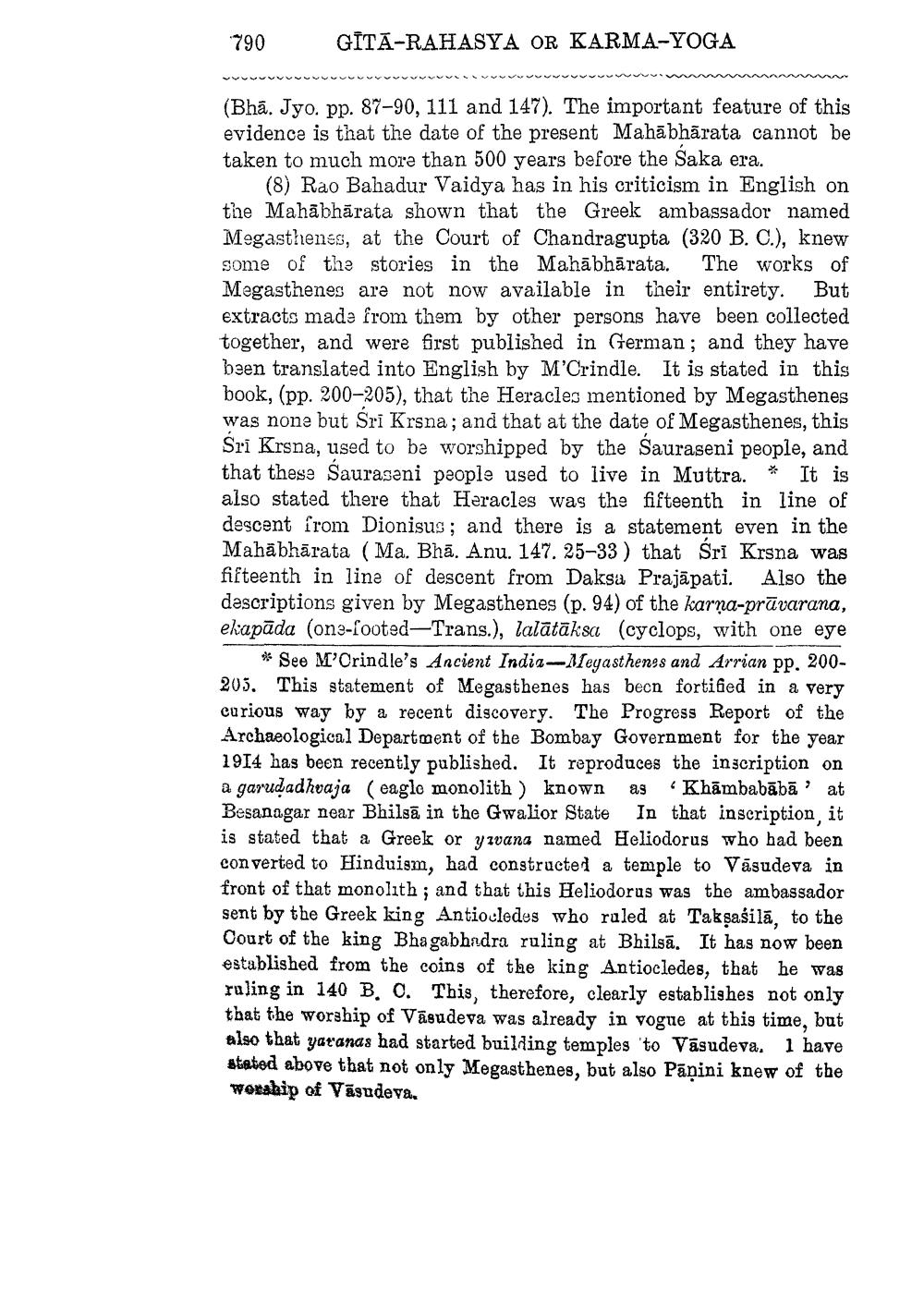________________
790
GITA-RAHASYA OR KARMA-YOGA
(Bhā. Jyo. pp. 87-90, 111 and 147). The important feature of this evidence is that the date of the present Mahābhārata cannot be taken to much more than 500 years before the Saka era.
(8) Rao Bahadur Vaidya has in his criticism in English on the Mahābhārata shown that the Greek ambassador named Megasthenes, at the Court of Chandragupta (320 B. C.), knew some of the stories in the Mahābhārata. The works of Megasthenes are not now available in their entirety. But extracts made from them by other persons have been collected together, and were first published in German; and they have been translated into English by M'Crindle. It is stated in this book, (pp. 200-205), that the Heracles mentioned by Megasthenes was none but Sri Krsna; and that at the date of Megasthenes, this Sri Krsna, used to be worshipped by the Sauraseni people, and that these Sauraseni people used to live in Muttra. * It is also stated there that Heracles was the fifteenth in line of descent from Dionisus; and there is a statement even in the Mahābhārata (Ma. Bhā. Anu. 147. 25-33) that Sri Krsna was fifteenth in line of descent from Daksa Prajāpati. Also the descriptions given by Megasthenes (p. 94) of the karna-prūvarana, ekapāda (ons-footed-Trans.), lalātāksa (cyclops, with one eye
* See M'Orindle's Ancient India--Meyasthenes and Arrian pp. 200205. This statement of Megasthenes has been fortified in a very curious way by a recent discovery. The Progress Report of the Archaeological Department of the Bombay Government for the year 1914 has been recently published. It reproduces the inscription on a garudadhvaja (eaglo monolith ) known as "Khāmbabābā' at Besanagar near Bhilsa in the Gwalior State In that inscription, it is stated that a Greek or yzvana named Heliodorus who had been converted to Hinduism, had constructed a temple to Vasudeva in front of that monolith ; and that this Heliodorus was the ambassador sent by the Greek king Antiocledes who ruled at Takşaśilā, to the Court of the king Bhagabhadra ruling at Bhilsā. It has now been established from the coins of the king Antiocledes, that he was ruling in 140 B. 0. This, therefore, clearly establishes not only that the worship of Vasudeva was already in vogue at this time, but also that yaranas had started building temples 'to Vasudeva. 1 have stated above that not only Megasthenes, but also Pāṇini knew of the Worship of Vāgndeva.




